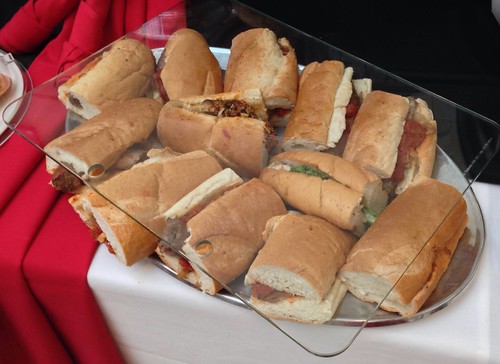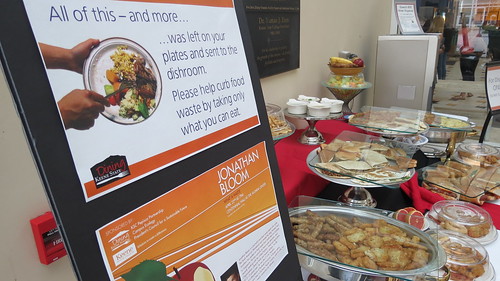I recently had the honor of giving the first ever webinar for Food Tank. At least that’s what I’m told happened. I just spoke into my computer and hoped that people were listening. And based on the array of questions, at least a few folks were!
 While we allotted 15 minutes for questions, that time just flew by. Since I couldn’t get to most of the questions, I wanted to answer the remainder here:
While we allotted 15 minutes for questions, that time just flew by. Since I couldn’t get to most of the questions, I wanted to answer the remainder here:
Q: Seems odd that one of the drivers of waste is the low cost of food and overproduction, but yet there are a large number of food insecure (not saying the numbers are wrong, just seems odd). Seems like it should be easy to solve (to the naive like myself anyway).
A: It does seem odd. And it is odd! But that’s the dysfunctional food system we now have. You’re hitting on the fundamental incongruity of food waste. That we regularly discard a potential solution to hunger. It does seem easy to solve this imbalance because it would be. Or at least it would be if we really committed to tackling hunger.
How big is the impact of biofuel/ethanol? And does that factor into the waste count as well?
I’m not entirely sure what you’re asking, but biofuels have a significant impact on our agricultural system, as they, too, require plenty of pesticides, energy, water and land usage. And crops grown for biofuels aren’t factored into the waste numbers because they aren’t classified as a food items a human could eat. (Insert school food or mom’s cooking joke here)
In your opinion what area of the foodservice industry would warrant detailed research on foodwaste.
All areas of foodservice warrant a closer look! The industry-led Food Waste Reduction Alliance is doing just that, but I’d love to see more independent studies and data on exactly where our waste is coming from. In general, all-you-can-eat and self-service are two major problem areas, though. When the two combine, it’s the worst case scenario, as it leads to great food waste, overeating and the inability to donate the remaining food (for health code reasons).
Everyone is concerned about feeding 9 billion people in 2050 – how do you feel about this?
I’m concerned! If we continue with our present rate of wasting—about 1/3 of global food supply isn’t consumed—we’ll be in big trouble by then. All the more reason to tackle our current food inefficiencies—and the sooner the better!
Read More »
 — —
— — At the Ticino area restaurant you can take all you want from the 12 franc buffet, but not finishing it will
At the Ticino area restaurant you can take all you want from the 12 franc buffet, but not finishing it will  While we allotted 15 minutes for questions, that time just flew by. Since I couldn’t get to most of the questions, I wanted to answer the remainder here:
While we allotted 15 minutes for questions, that time just flew by. Since I couldn’t get to most of the questions, I wanted to answer the remainder here:





